Last chance to see: the shape-shifting furniture of Enric Miralles
Fundació Enric Miralles with support from the American Hardwood Export Council pays tribute to the late Catalan architect’s furniture work, with an exhibition demonstrating his dynamic approach to design (until 29 August 2021)
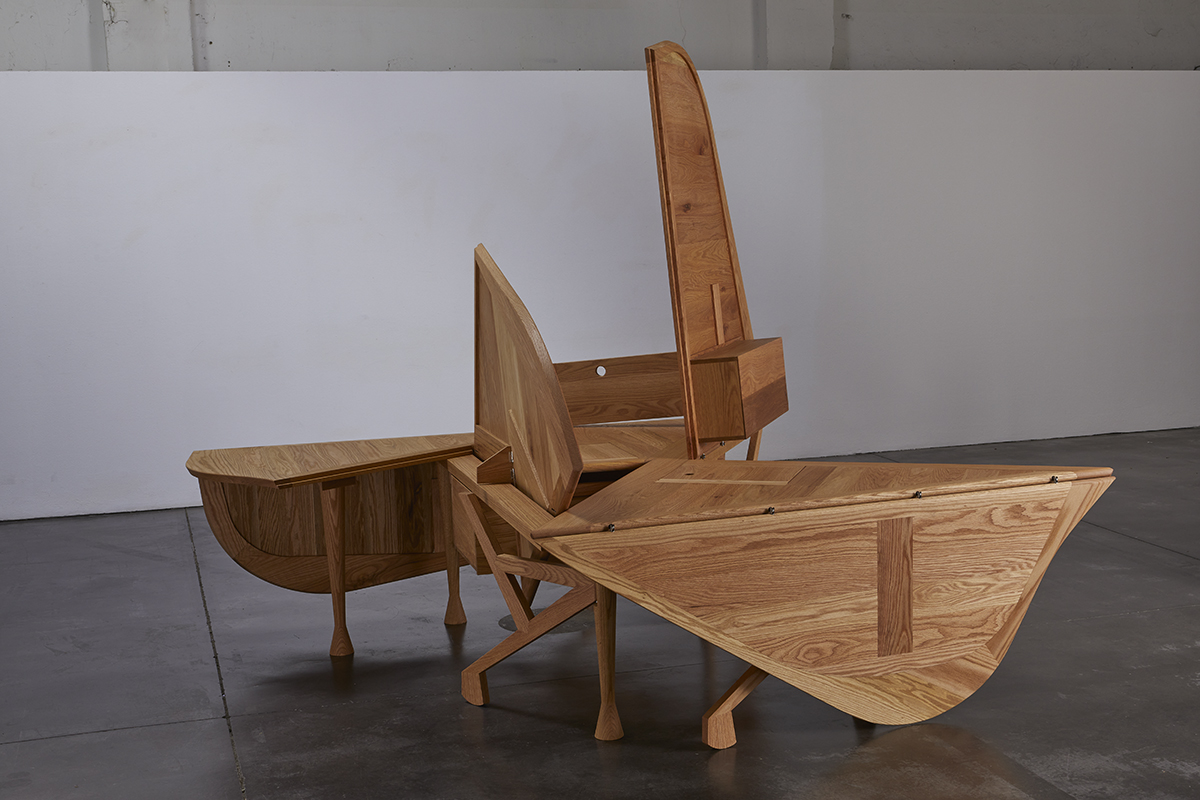
Fundació Enric Miralles celebrates the late Catalan architect with an exhibition of ingenious furniture designs curated by architects Benedetta Tagliabue and Joan Roig i Duran. ‘Miralles. Perpetuum Mobile’ reveals the lesser-known side of Enric Miralles, featuring his production as a furniture designer, which is collected into an exhibition for the first time.
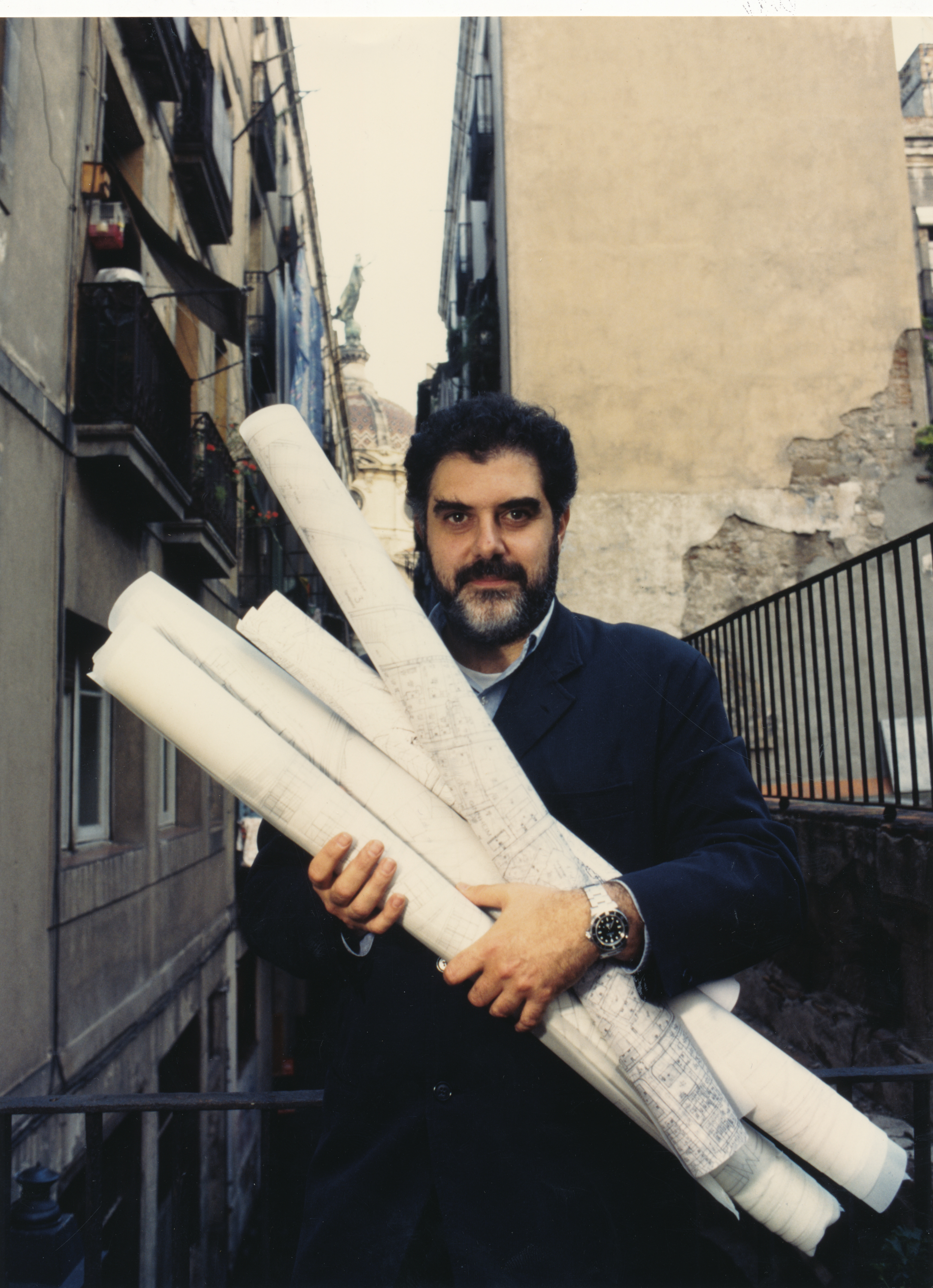
Enric Miralles
’I feel Enric is very present. And I still have a kind of conversation with him. Maybe I think he’s participating in what we are doing and he already knows,’ said architect Benedetta Tagliabue, Miralles’ long-term partner, who co-designed many of the pieces and who has since his death been working to preserve his legacy through the Fundació Enric Miralles. The foundation’s role, Tagliabue explained, is to connect Miralles’ approach and thinking with a new generation of architects, designers and other creatives. ‘The idea is to make the conversation go on. Enric was always very experimental, he had a mind that was never conventional. If you posed a problem to Enric he would always answer back with a surprising thing. He was special and that is still coming out from the documents you find in his archives.’
Enric Miralles on show at Disseny Hub

The original ‘Inestable’ in iroko wood, photographed at Miralles' and Tagliabue's home in Barcelona
The exhibition at Barcelona's Disseny Hub comprises models of furniture and objects mainly created by the architect for his own home, reproduced in collaboration with AHEC, with a selection of sustainable American hardwoods donated by AE Maderas. On display are also a series of drawings and photographic collages, offering further insight into Miralles’ creative universe.
Miralles’ furniture design was defined by dynamism: this is in no way a series of static furniture pieces. The collection on display includes shape-shifting tables whose structure conceals drawers and cabinets, or whose top lifts to become something else. Wooden joinery and hinges are used technically and imaginatively to extend a piece’s scope: the organic forms of the ‘Lelukaappi’ shelving unit can extend to create a landscape or contract to become a cozy refuge. The ‘Troncs’ tables feature a simple mechanism that allows the tables to change in height or be collapsed completely, while the ‘Estudi’ desk was a collaborative piece designed by Miralles and Tagliabue for their home office: the large table allowed the architects to sit and work facing each other, and featured practical details such as a slot for cables and a series of drawers on wheels.
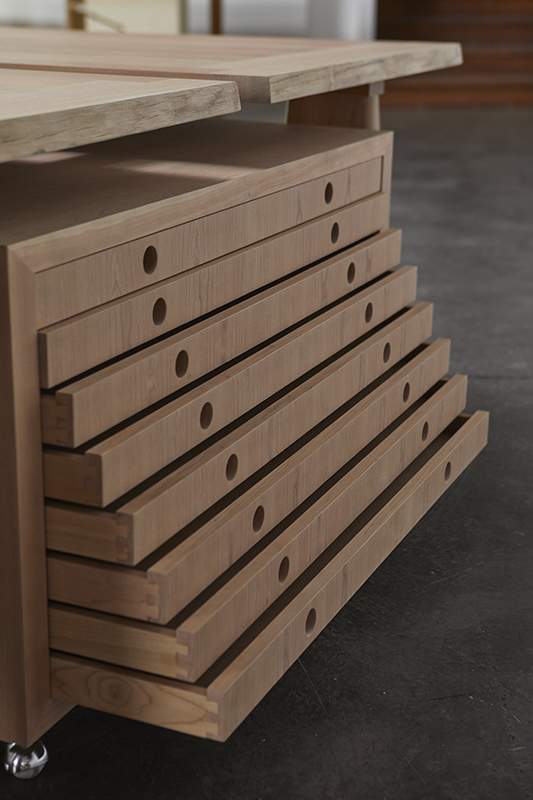
A detail of the ‘Estudi’ desk
Even when more traditional in its functionality, Miralles’ furniture doesn’t represent stillness: sinuous lines and playful constructions merge the architect’s utilitarian approach with his intuitive creative interpretation of traditional furniture. Among the pieces on display is the ‘Mistery’ table, whose drawing and manufacturing instructions were found inside an old notebook and never realised before.
The architect’s last home in Barcelona was in an old warehouse turned into an open, versatile space: within, Miralles imagined a ‘house in motion’ and his flexible furniture designs followed this principle. Wanting a space where furniture did not have an established function or position, he experimented with designing his own in collaboration with local carpenters. ‘We said that this was our home and it’s not going to be published,’ said Tagliabue. ‘You have fewer constraints when you’re doing something for yourself. You’re really serving yourself as a client.’
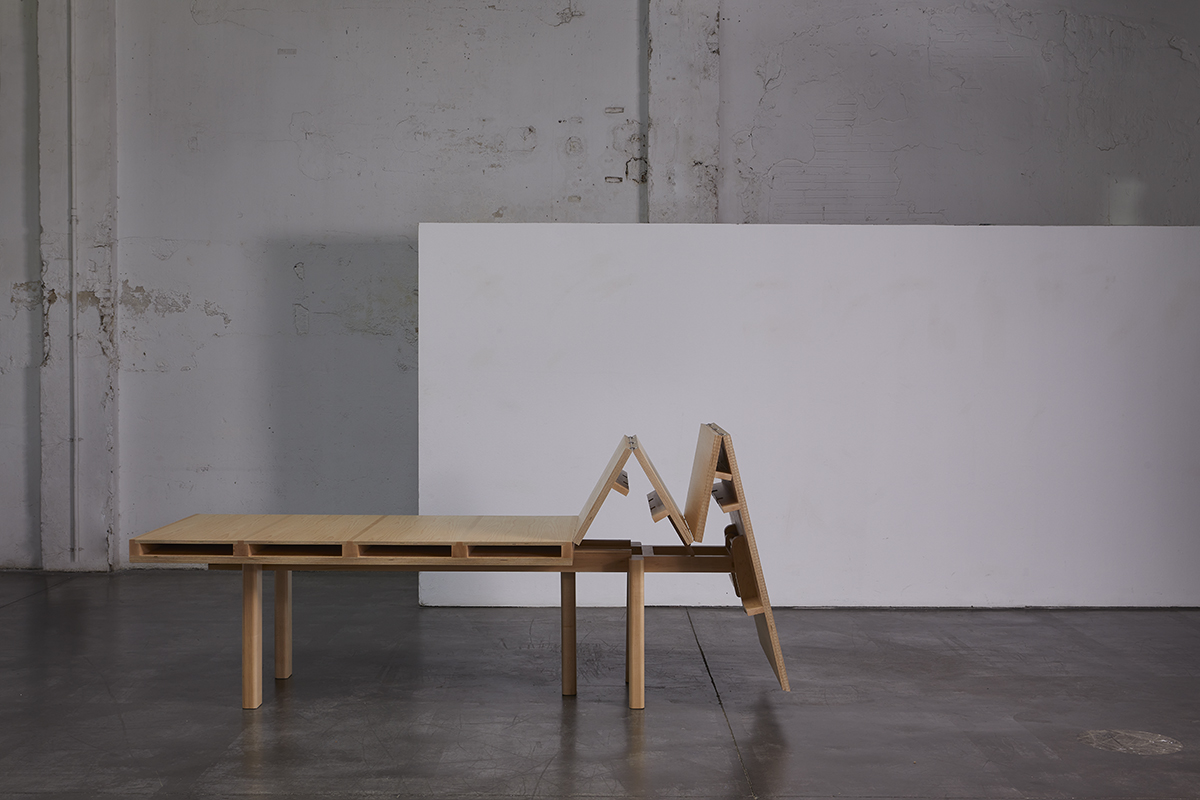
The ‘Mistery’ table in American maple. A drawing table that can be lengthened or shortened thanks to a zigzag system, working as a workspace or 4 meter long dining table for up to 16 guests
Wallpaper* Newsletter
Receive our daily digest of inspiration, escapism and design stories from around the world direct to your inbox.
The exhibition includes 20 pieces comprising wooden furniture and lighting, including pieces inspired by the work of Alvar Aalto, as well as designs for the Scottish Parliament project and the headquarters of the Círculo de Lectores in Madrid. Tagliabue and Roig i Duran worked with AHEC to recreate 9 of the furniture pieces, which were crafted in four underused American hardwood species including red oak, maple, cherry and tulipwood.
The exhibition is designed to recreate the private house of Miralles and Tagliabue, with family pictures giving a glimpse into the architects’ home. In addition, AHEC has created a video demonstrating the meticulous process of recreating each piece of furniture to bring Miralles’ legacy back to life.
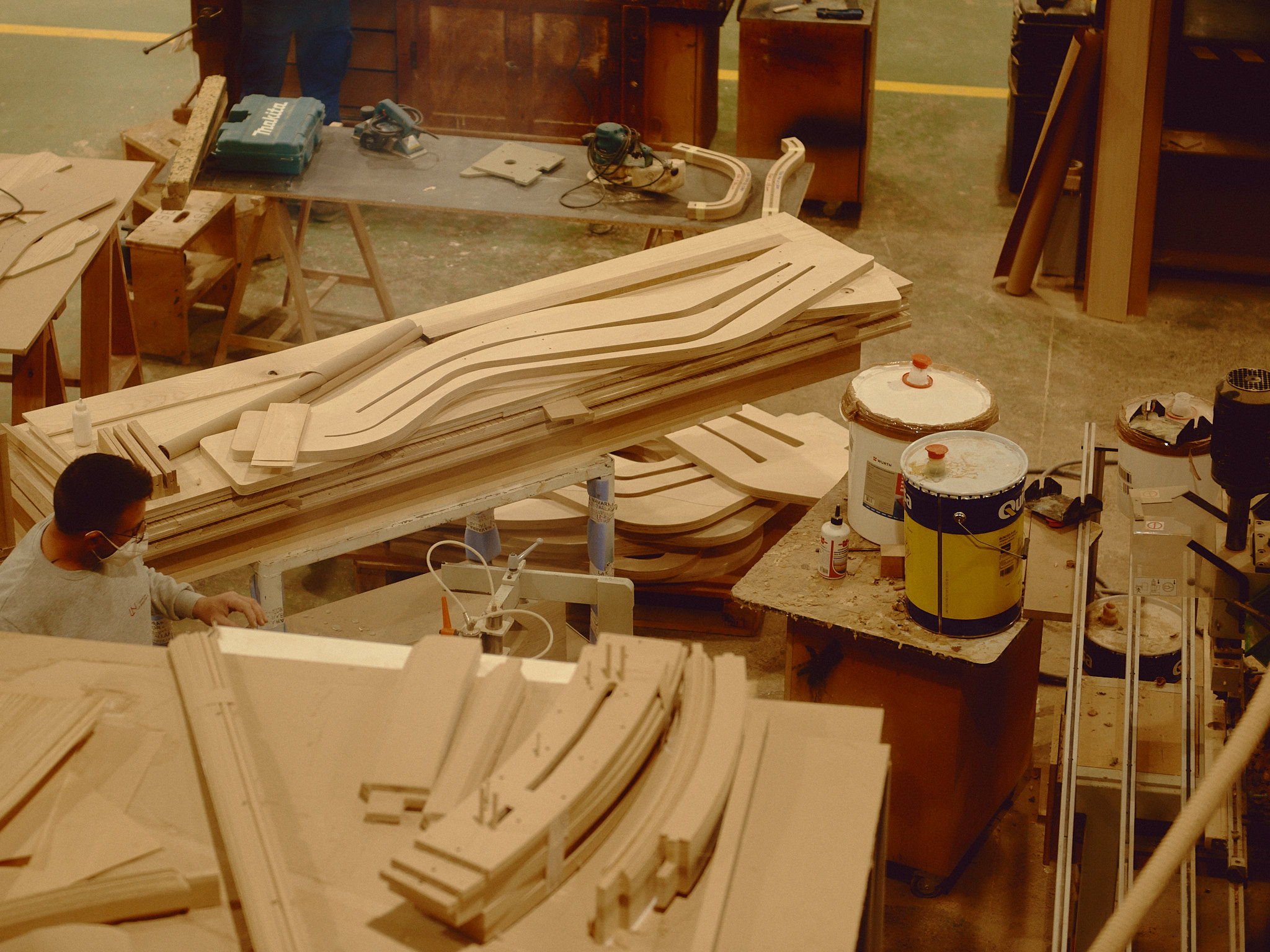
9 of the furniture pieces were recreated in collaboration with AHEC, featuring underused American hardwood species including red oak, maple, cherry and tulipwood
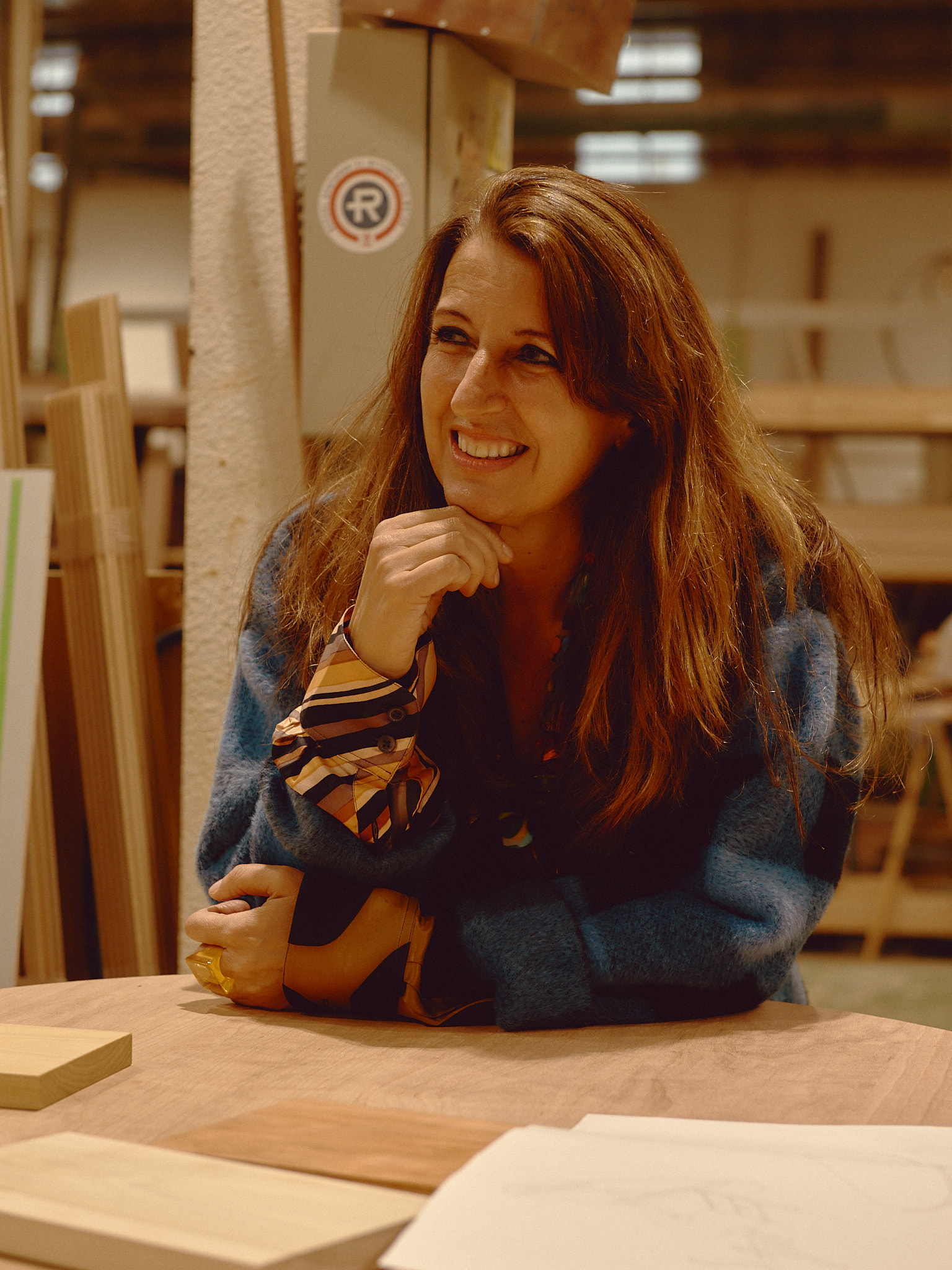
Architect Benedetta Tagliabue, Miralles' partner and the engine behind the Fundació Enric Miralles. Tagliabue worked closely with AHEC to bring back Miralles' furniture to life
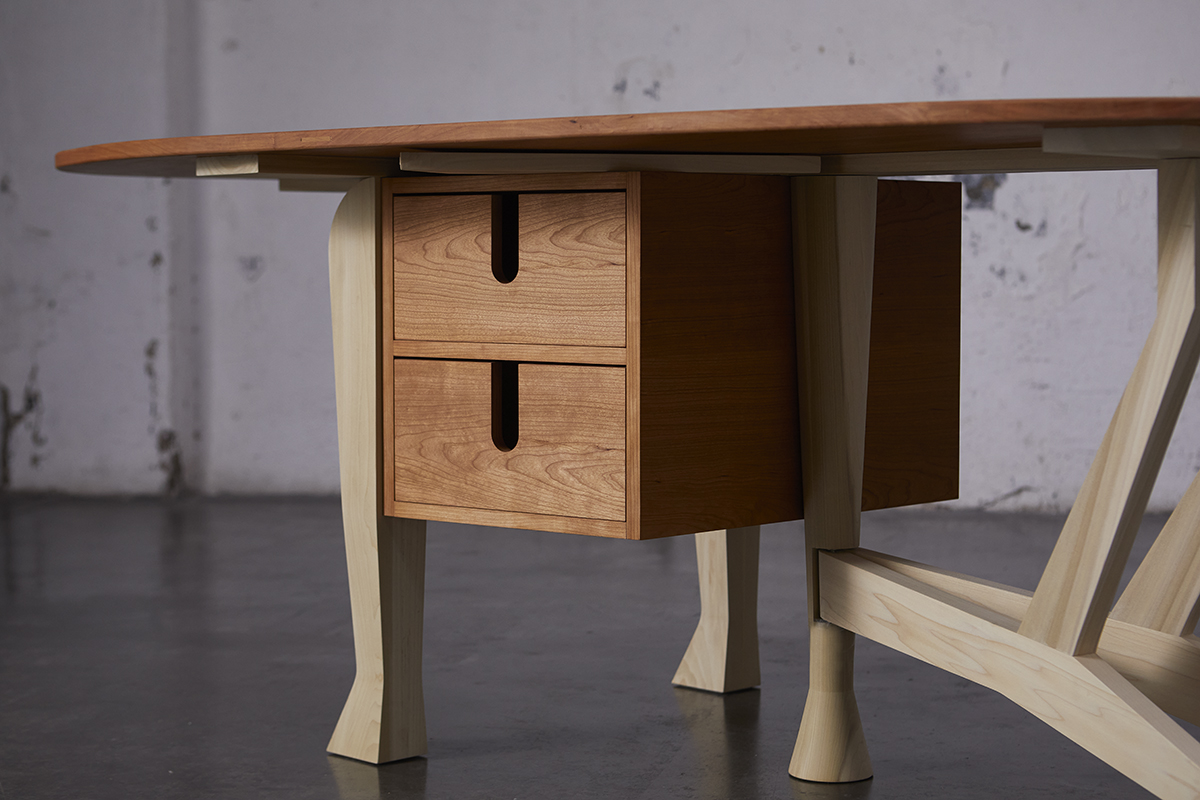
A reproduction of the ‘Dolmen’ table (1995), in contrasting American cherry and tulipwood. The table was originally created for Tagliabue and Miralles' own home, and originally made from bolondo wood recovered from the Icaria pergola project
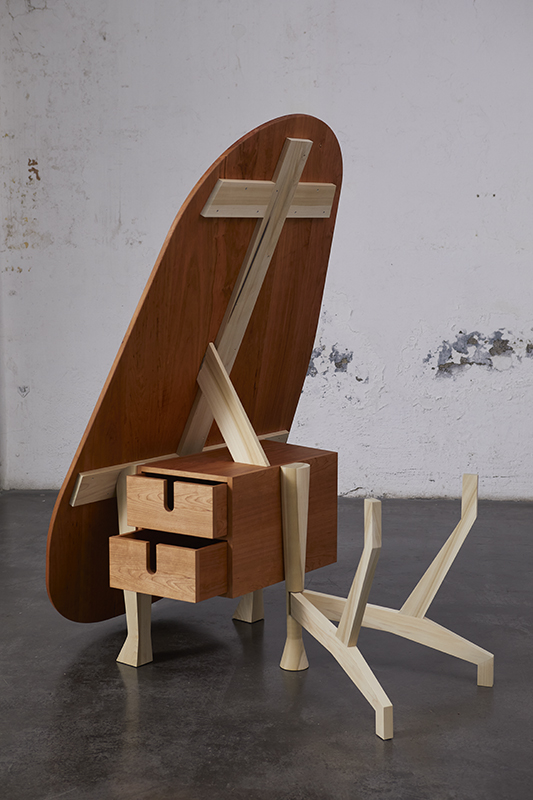
The design of the ‘Dolmen’ table is based on the concept of restaurant tables that fold vertically when not in use: equipped with drawers to work as a desk, when the top is lifted it can serve as a room divider
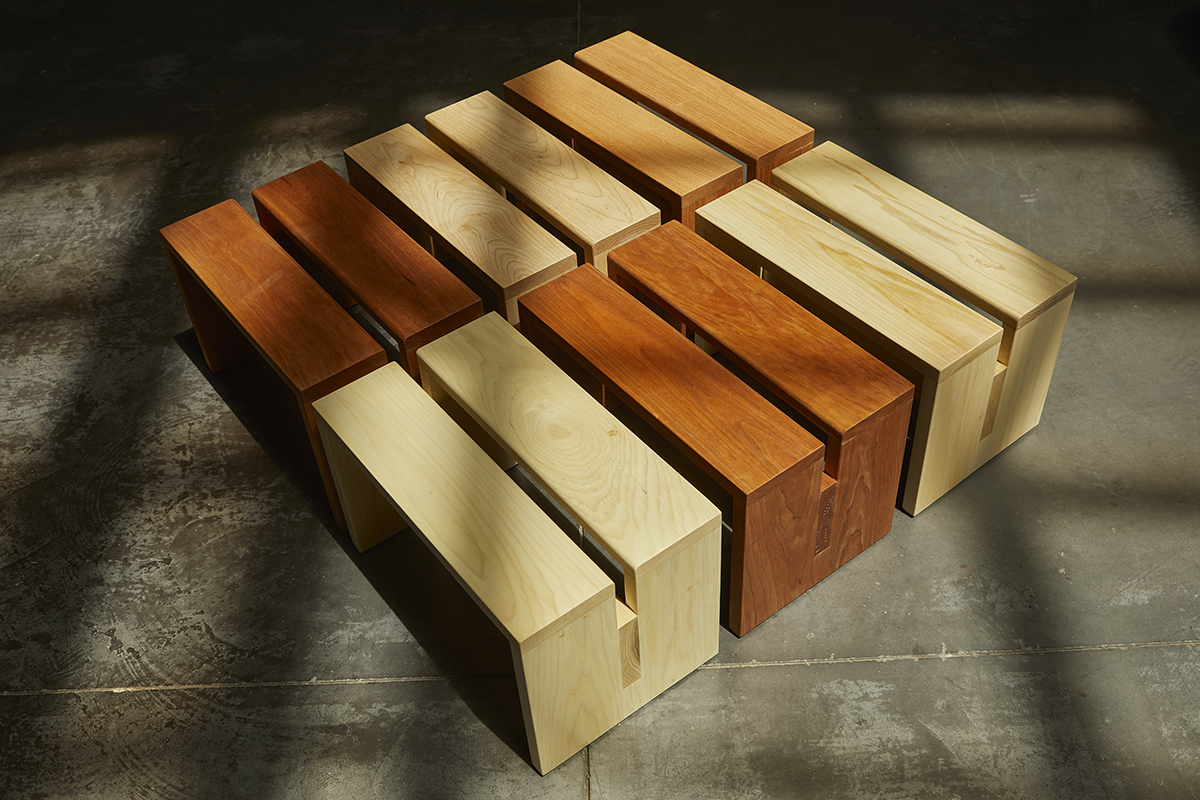
The ‘Japonès’ Stool (1992), shown here in American red oak, tulipwood, maple and cherry. As the name suggests, its design was inspired by a trip to Japan that Miralles and Tagliabue took in the 1990s, its forms referencing a traditional Japanese shower stool
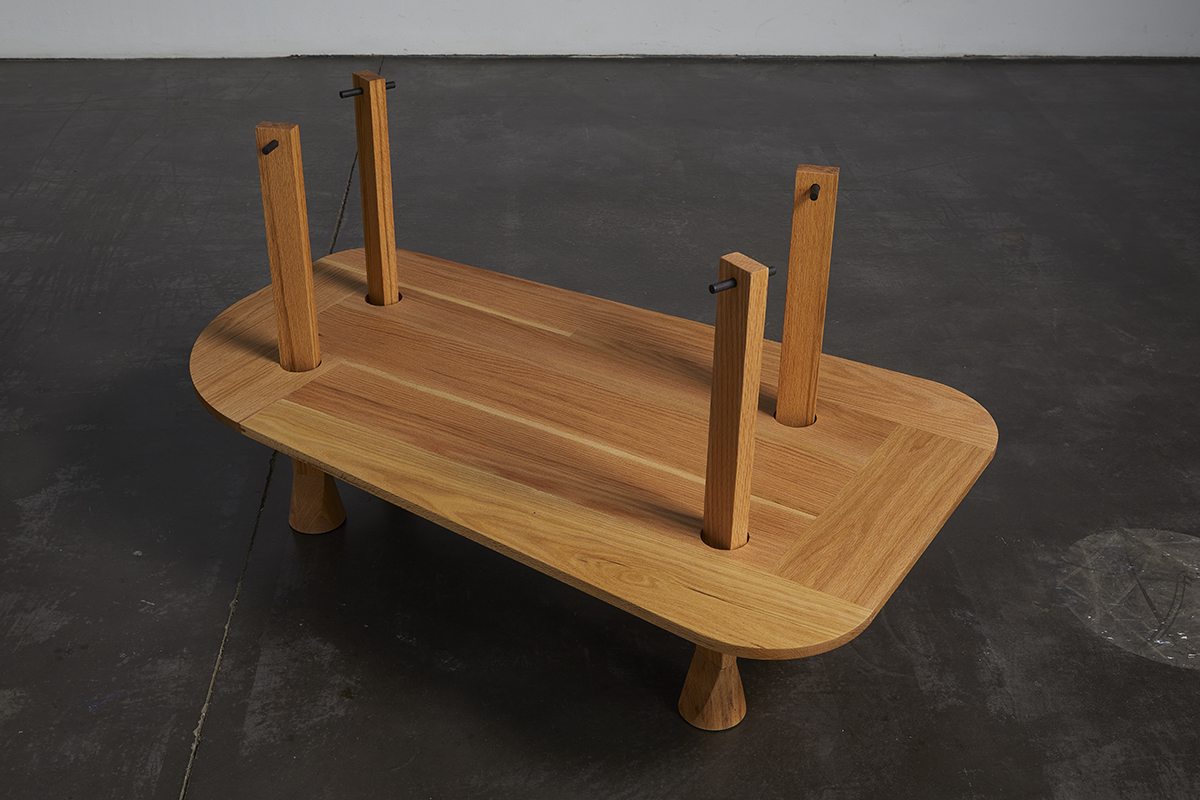
Another piece originally created for Miralles' and Tagliabue's own home, the ‘Tropical’ table (1994) can be adjusted to become a dining or coffee table. For the exhibition, the table was made in American red Oak
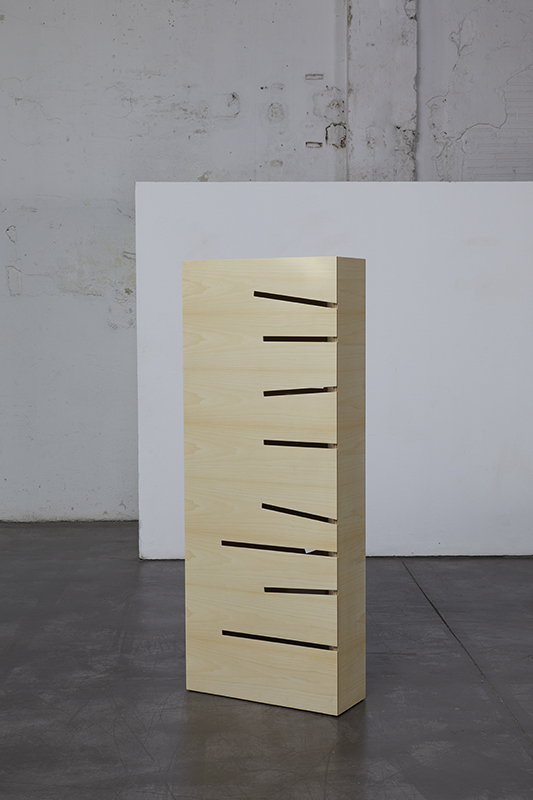
‘Marisa’, a storage unit designed in 1992 and reproduced in tulipwood plywood. Referencing the design of travel trunks, the piece features two high units that, through a series of hinges, can close to conceal books and other objects stored inside
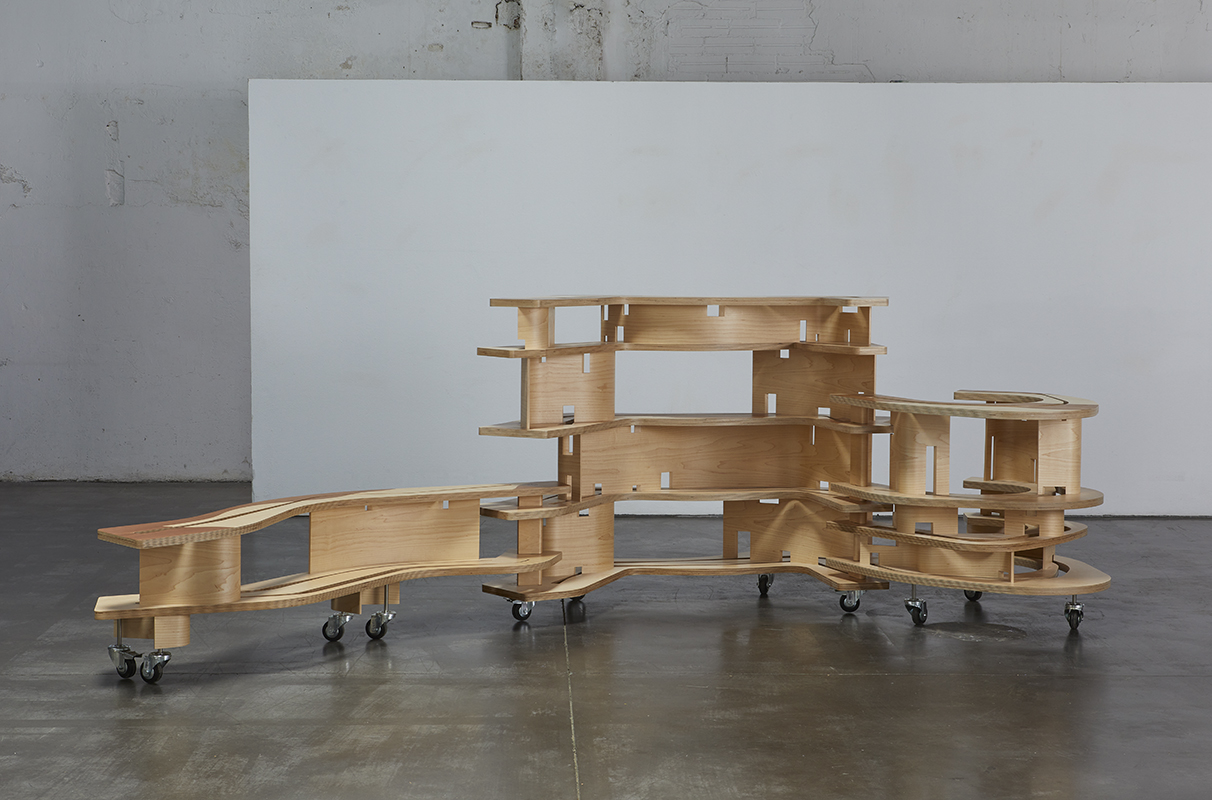
The Lelukaappi shelving unit: a design on wheels that can extend to create a landscape or contract to become a cozy refuge
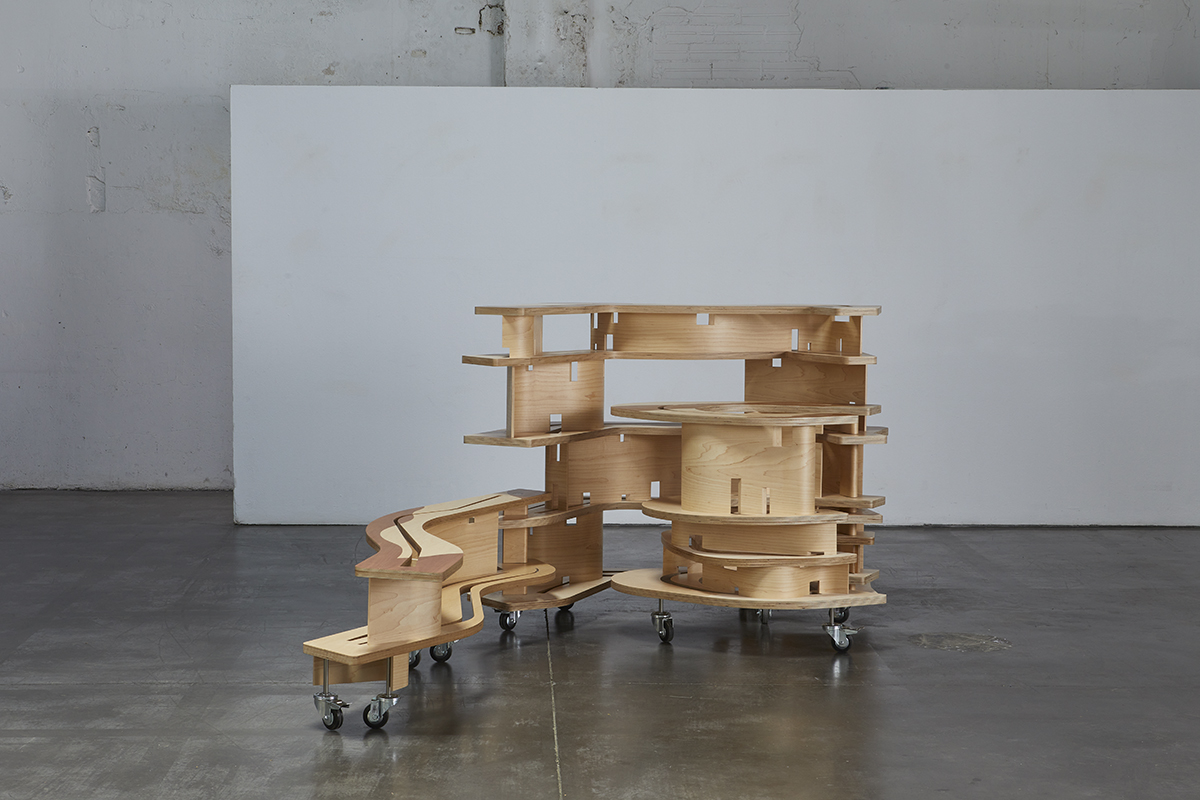
Lelukaappi is made up of three articulated units of different heights, which rotate on their axes to create different environents within
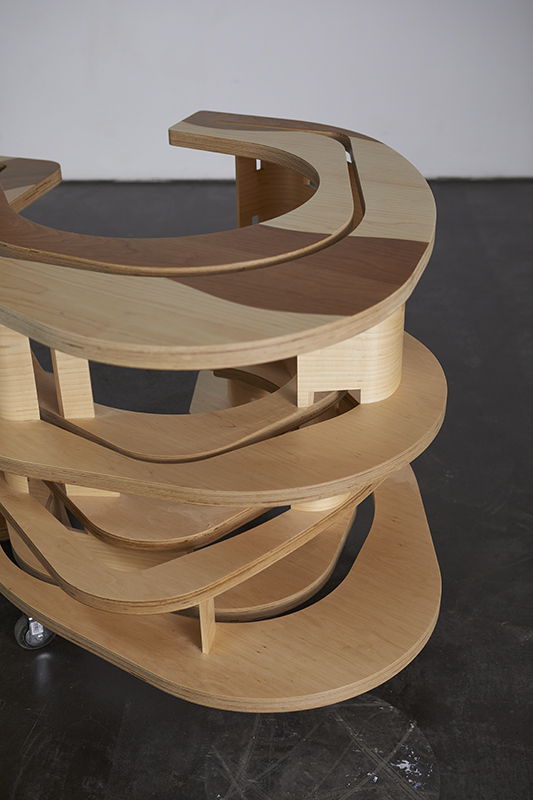
A detail of the ‘Lelukaappi’ shelving unit, featuring a composition of American maple and American cherry veneer
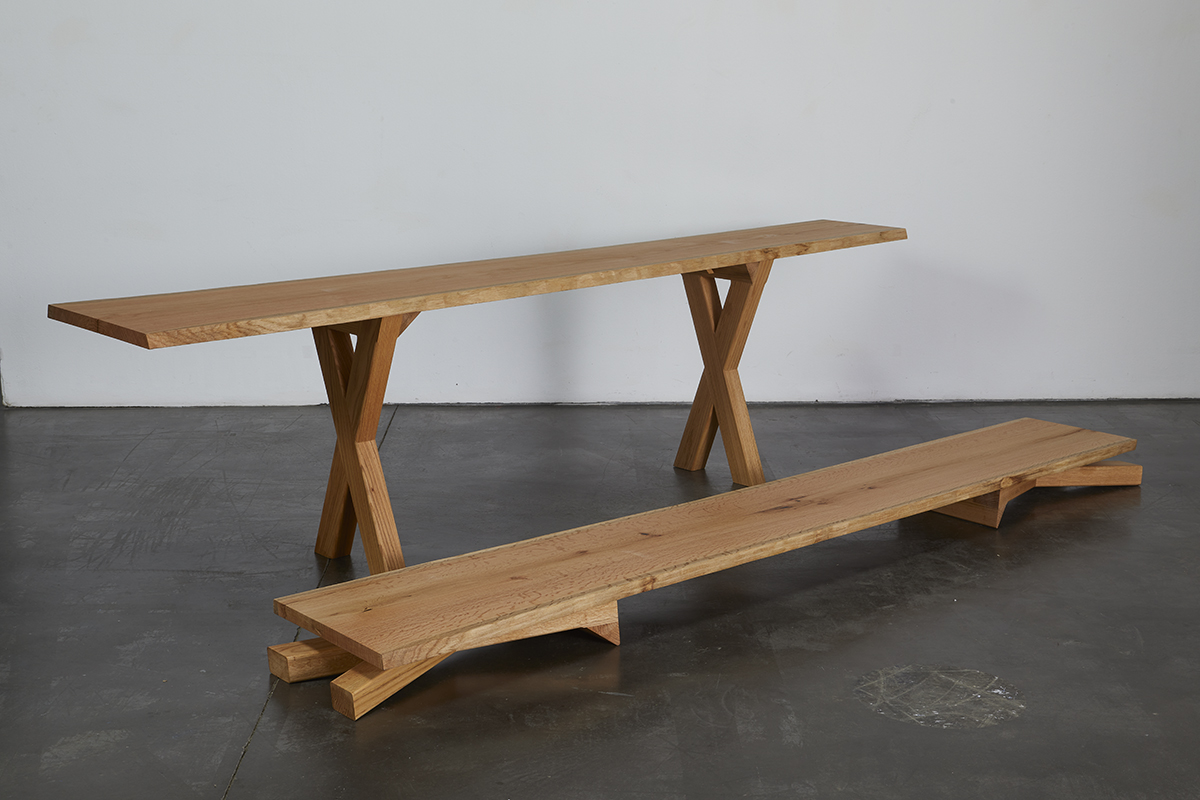
The ‘Troncs’ table (1998), designed in collaboration with Tagliabue and reproduced in American red oak. The table was part of the furniture in Miralles and Tagliabue's house, and featured a simple mechanism allows for the position of the legs to be changed to become a low table or be stored flat
INFORMATION
‘Miralles. Perpetuum Mobile’, Until 29 August 2021
fundacioenricmiralles.com
americanhardwood.org
ADDRESS
Disseny Hub
Plaça de les Glòries, 37
Barcelona
Spain
Rosa Bertoli was born in Udine, Italy, and now lives in London. Since 2014, she has been the Design Editor of Wallpaper*, where she oversees design content for the print and online editions, as well as special editorial projects. Through her role at Wallpaper*, she has written extensively about all areas of design. Rosa has been speaker and moderator for various design talks and conferences including London Craft Week, Maison & Objet, The Italian Cultural Institute (London), Clippings, Zaha Hadid Design, Kartell and Frieze Art Fair. Rosa has been on judging panels for the Chart Architecture Award, the Dutch Design Awards and the DesignGuild Marks. She has written for numerous English and Italian language publications, and worked as a content and communication consultant for fashion and design brands.
-
 Marylebone restaurant Nina turns up the volume on Italian dining
Marylebone restaurant Nina turns up the volume on Italian diningAt Nina, don’t expect a view of the Amalfi Coast. Do expect pasta, leopard print and industrial chic
By Sofia de la Cruz
-
 Tour the wonderful homes of ‘Casa Mexicana’, an ode to residential architecture in Mexico
Tour the wonderful homes of ‘Casa Mexicana’, an ode to residential architecture in Mexico‘Casa Mexicana’ is a new book celebrating the country’s residential architecture, highlighting its influence across the world
By Ellie Stathaki
-
 Jonathan Anderson is heading to Dior Men
Jonathan Anderson is heading to Dior MenAfter months of speculation, it has been confirmed this morning that Jonathan Anderson, who left Loewe earlier this year, is the successor to Kim Jones at Dior Men
By Jack Moss
-
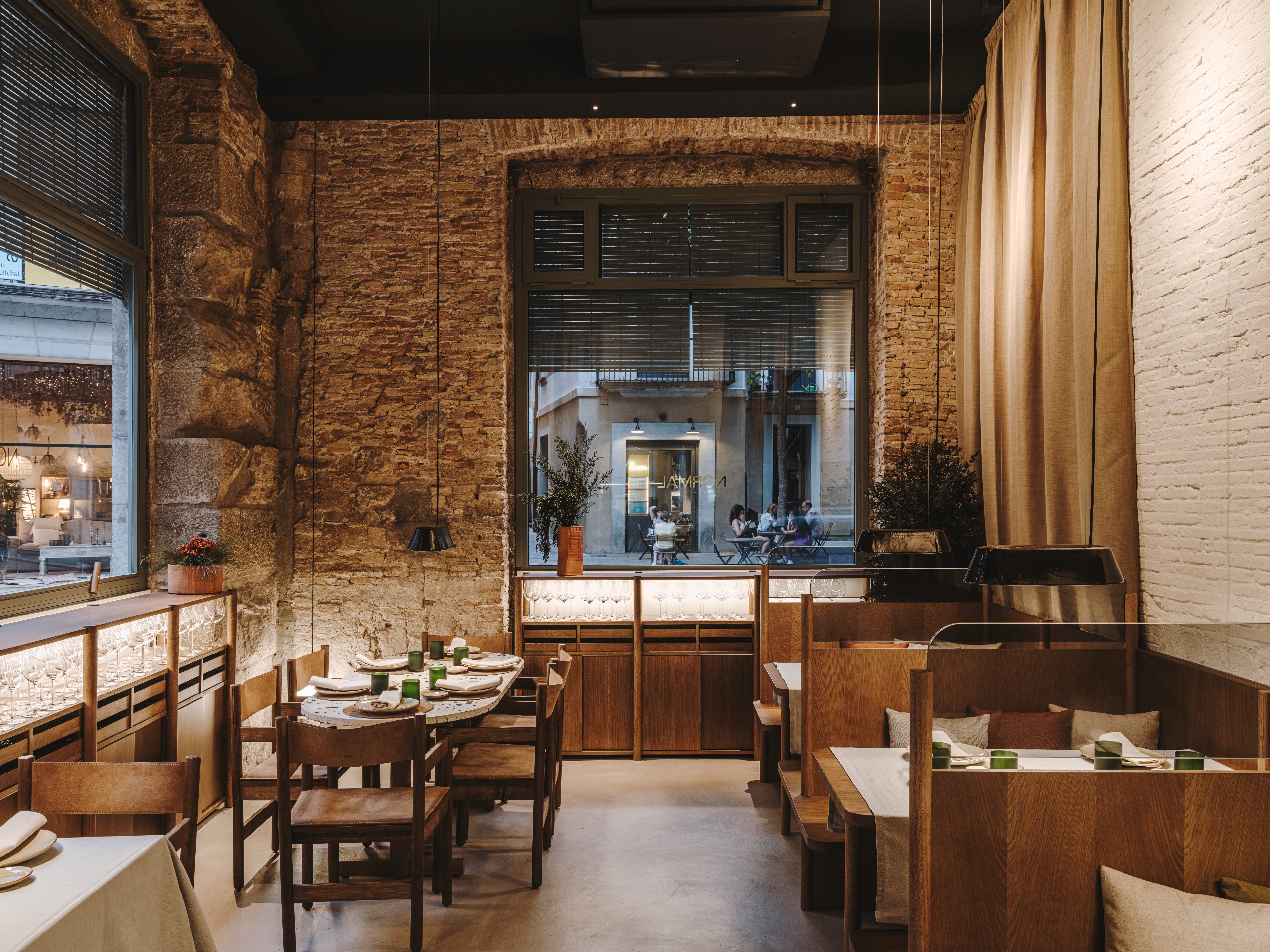 The Roca Brothers' new restaurant celebrates ‘ordinary’
The Roca Brothers' new restaurant celebrates ‘ordinary’The Roca Brothers latest dining concept – Girona's Restaurant Normal – is designed by Catalan designer Andreu Carulla in collaboration with local artisans
By Sheila Lam
-
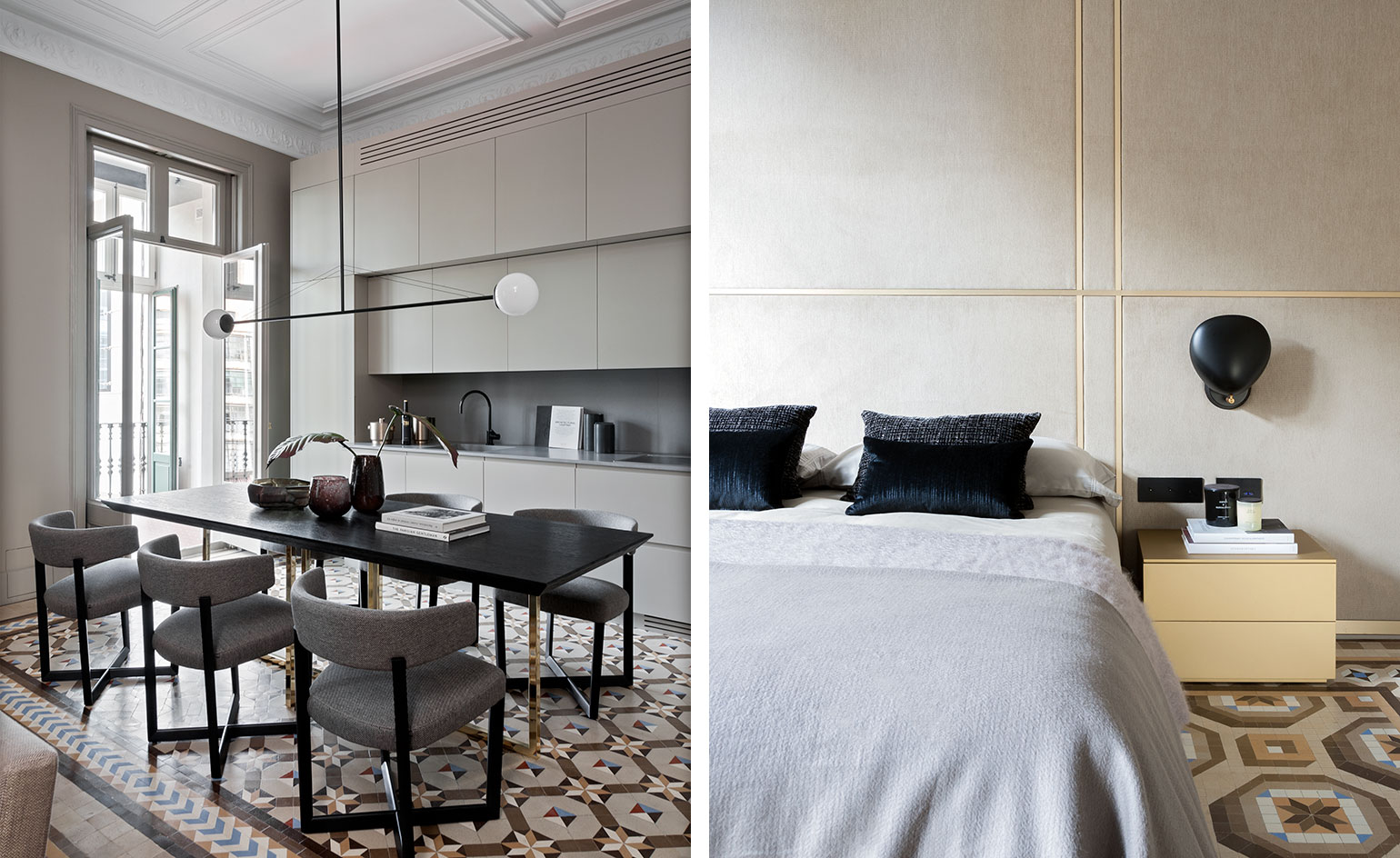 An apartment inside a modernist marvel by Antoni Gaudí in Barcelona gets reimagined
An apartment inside a modernist marvel by Antoni Gaudí in Barcelona gets reimaginedBy Luke Halls
-
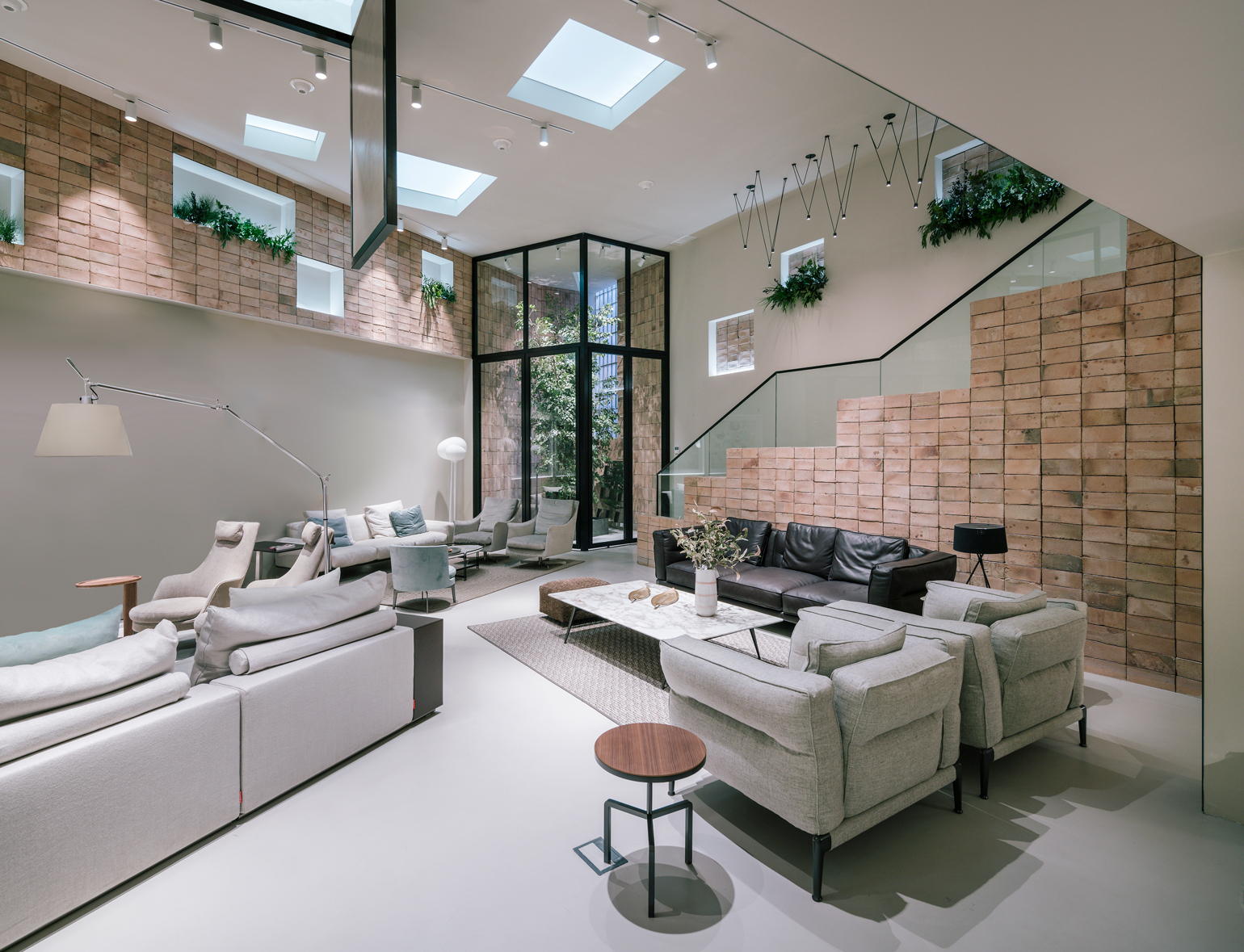 Spanish design store gets light-flooded interior makeover by local firm Zooco
Spanish design store gets light-flooded interior makeover by local firm ZoocoBy Elly Parsons
-
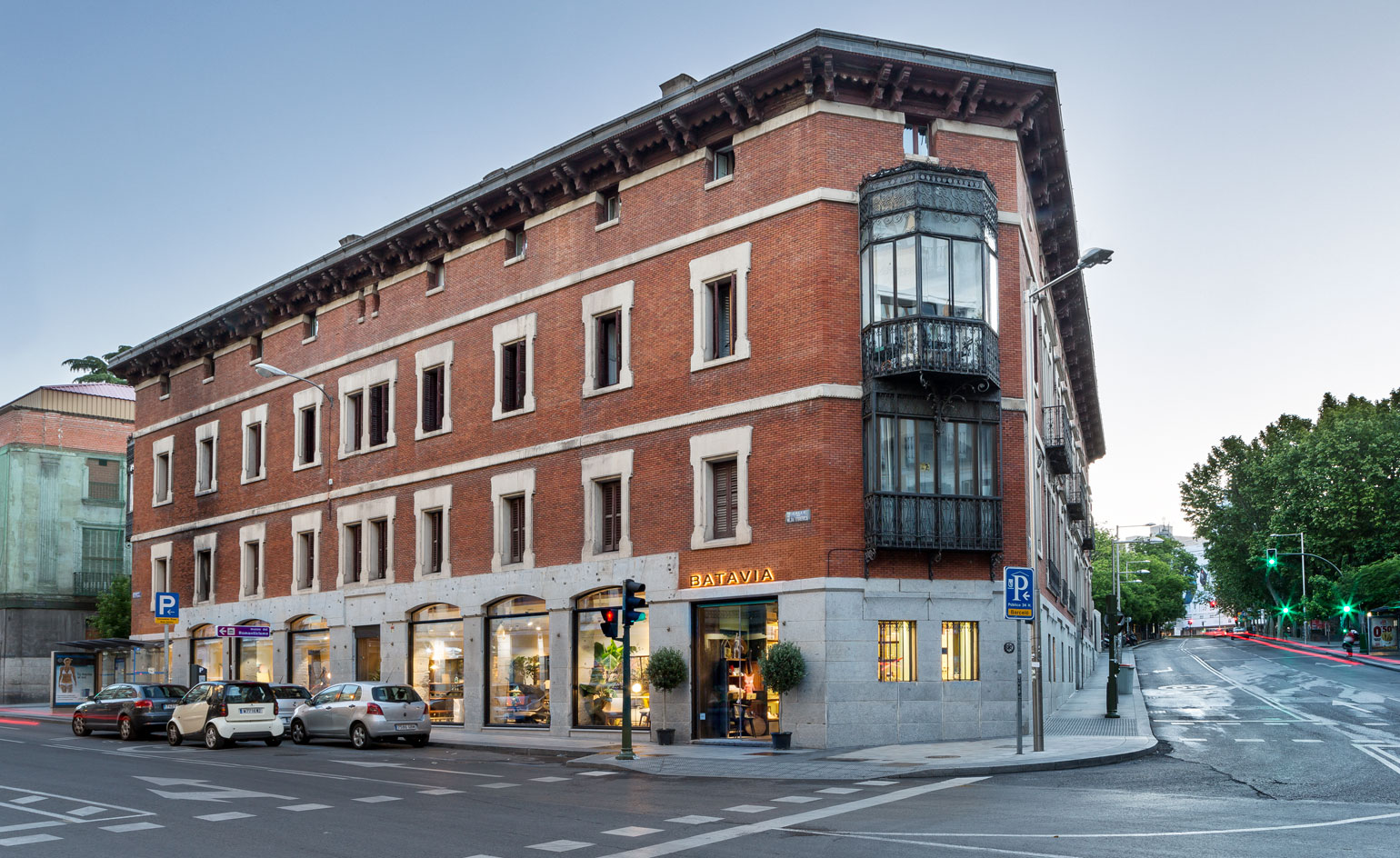 Eclectic shopping: Batavia celebrates 20 years with new Madrid flagship store
Eclectic shopping: Batavia celebrates 20 years with new Madrid flagship storeBy Elisa Carassai
-
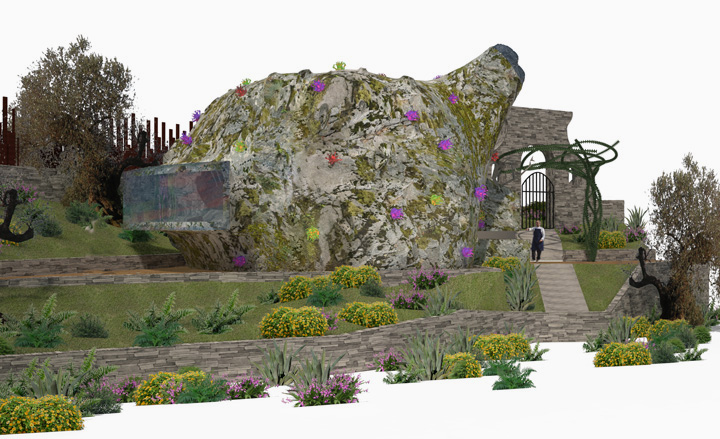 Ferran Adria's plans for the elBullifoundation
Ferran Adria's plans for the elBullifoundationBy Lauren Ho
-
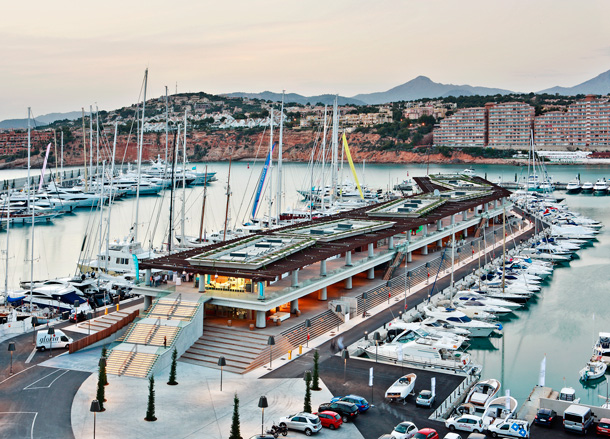 Port Adriano marina by Philippe Starck, Mallorca
Port Adriano marina by Philippe Starck, MallorcaBy Lauren Ho